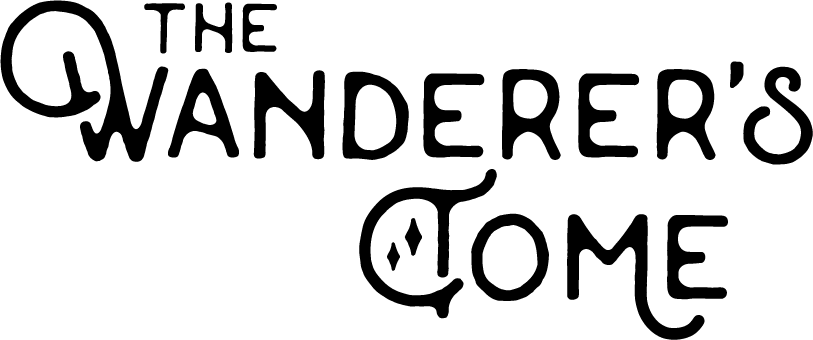#1 Frances & Ġorġ: A guide to designing TTRPGs for kids
This year, we’re excited to be designing a tabletop role-playing game (TTRPG) for kids aged 5 and up called Frances & Ġorġ: Camp Make Believe—a collaboration with Frances & Ġorġ by Studio Meltdown. The game stars beloved Maltese characters, and we’re thrilled to bring this passion project to life!
This blog post marks the beginning of a series where we’ll take you through our journey of creating a TTRPG specifically designed for young children. Since this is new territory for us, we’ve done a lot of research and played through several existing TTRPGs for kids (there are some fantastic ones out there!). By diving into these games, we’ve learned what works, what could use improvement, and most importantly, how to make our game both fun and educational. We also wanted to ensure it’s easy for adults—who may be entirely new to TTRPGs—to understand and enjoy. If you’re curious about TTRPGs for kids, this series is for you—come along and learn with us!
What is a TTRPG? (Just in Case!)
A tabletop role-playing game (TTRPG) is a collaborative storytelling experience—think of it as improv with rules. Players (in this case, the kids) take on the role of fictional characters and play-act, while the Game Master (usually an adult) guides the story. Dice rolls often add an element of chance, deciding how well actions succeed or fail.
Unlike traditional board games, TTRPGs don’t have winners or losers, and players aren’t competing. Instead, everyone works together to create an engaging story. It’s structured make-believe, where creativity and teamwork are key.
Key Considerations for Designing TTRPGs for Kids
Through our research, we’ve gathered a few key things to keep in mind when designing an educational TTRPG for young kids. While we might not be able to cover all of them in our first game, it’s helpful to have a clear list of priorities. Here are some of the key things we’re focusing on:
1. Simplicity and Accessibility
Keep game mechanics simple and easy to understand.
Design the game so Game Masters (GMs) don’t need much prep, making it easy for parents and educators to run.
Make the game accessible with high-contrast colours, dyslexia-friendly fonts, and screen-reader-friendly PDFs.
2. Gradual Learning Approach
Introduce skills gradually to avoid overwhelming young players (inspired by Bloom’s Mastery Model of Education).
Start with basic mechanics and slowly add complexity as players become more confident.
Create opportunities for players to combine skills in later stages of the game.
3. Inclusive and Social Play
Encourage teamwork, so everyone contributes to the story.
Design characters and situations that reflect diversity and inclusivity.
Adapt the game to cover different educational themes, like history, science, or language learning.
4. Engagement Through Storytelling
Focus on exploration, social interaction, and light action as key parts of play.
Create story-driven quests that inspire problem-solving and creativity.
Provide a safe environment where failure is part of the learning experience rather than discouraged.
5. Debriefing for Deeper Learning
Include time after the game to reflect on what was learned.
Guide players to talk about their experiences, feelings, and how they solved challenges.
Learning Outcomes of Our Kid-Friendly TTRPG
In addition to the key design considerations, we’ve also created a list of learning outcomes for our game. While we may not hit all of these in our first version, they serve as a helpful starting point. These are the key skills and lessons kids can learn from playing TTRPGs. Here’s what children can gain:
1. Critical Thinking and Problem Solving
Players think strategically about their next steps and ask questions to move forward.
Puzzles and challenges encourage flexible thinking and adaptability.
2. Social-Emotional Development
The collaborative nature of the game fosters teamwork, communication, and empathy.
Role-playing helps kids explore different viewpoints and manage their emotions.
3. Inclusive Play and Representation
Diverse characters and storylines create an inclusive experience where all players feel seen and valued.
Accessibility features make the game suitable for children with different needs.
4. Safe Environment for Failure
The game encourages risk-taking in a low-stakes setting, helping children build resilience.
Players learn that failure is part of the process and can lead to success.
5. Motivation and Engagement
Fun, interactive elements keep kids excited and engaged.
Role-playing boosts kids motivation by giving players agency in their story.
6. Literacy Skills
Encourages reading comprehension, improvisational skills, and verbal communication.
7. Adaptability for Other Learning Objectives
The game can include content like science, language, or history, making it useful for educators.
This flexibility would make it a great tool for educators looking to integrate play-based learning into their classrooms.
Final Thoughts
Designing TTRPGs for kids isn’t just about simplifying rules—it’s about creating experiences that nurture creativity, critical thinking, and teamwork. The focus should be on how kids can improve their skills and learn new ones. For our game, we’re focusing on accessibility, gradual skill-building, and engaging storytelling to make it both educational and fun. Our goal is to offer a flexible framework that helps young players learn through play, turning each session into an adventure in storytelling and personal growth.
Next, we’re excited (and a bit nervous!) to begin playtesting our initial game design at primary schools in Malta. Kids will definitely let us know if they’re bored, so we’re looking forward to seeing how they react! I’ll be documenting the playtesting next, sharing what it’s like working with young children in a classroom setting and the outcomes.
Read Blog #2: Playtesting With Kids: What We Learned
Read Blog #3: How to Play Camp Make-Believe
References
Bean, A., & Connell, M. (2023). The Rise of the Use of TTRPGs and RPGs in Therapeutic Endeavors.
Campbell, H., & Madsen, A. (2021). Nothing Like a Good Fiasco! Exploring the Potential of Tabletop Role-Playing Games (TRPGs) As Literacy Experiences.
Dubbels, B. R. (2016). Pedagogy & Play: Creating a Playful Curriculum for Academic Achievement and Engaged Learning.
Prager, R. H. P. (2019). Exploring the Use of Role-playing Games in Education.
Schmit, W. L., Martins, J. B., & Ferreira, T. (2009). Role-playing games and education in Brazil: how we do it.
Zahra, M. (2019). Learning and Role-Playing Games.
Gilsdorf, J. (2017). Nothing Like a Good Fiasco! Exploring the Potential of Tabletop Role-Playing Games (TTRPGs) as Literacy Experiences.
Kaufman, S., & Green, M. (2018). The RPG Classroom: How Role-Playing Games Have Influenced the Gamification of Education.
This project is supported by Arts Council Malta.





